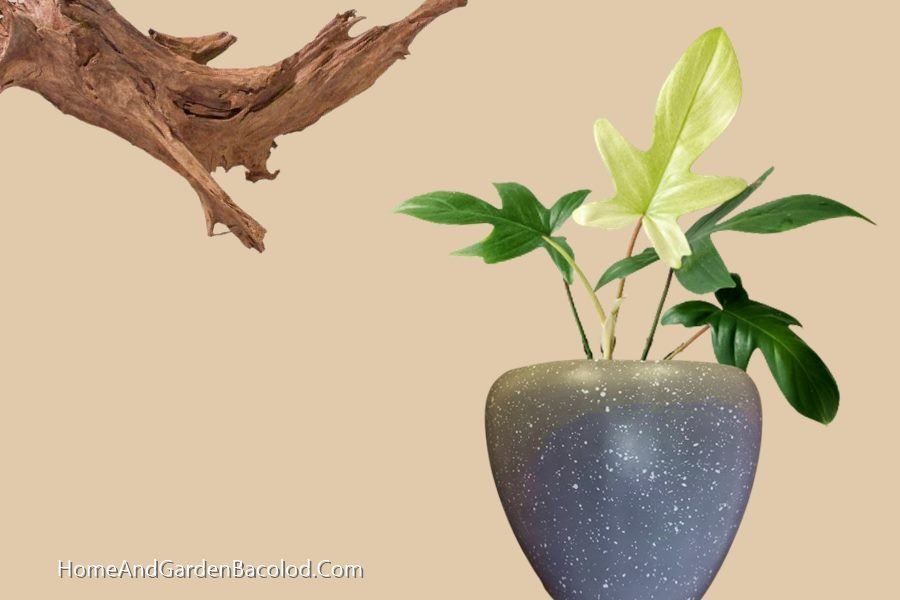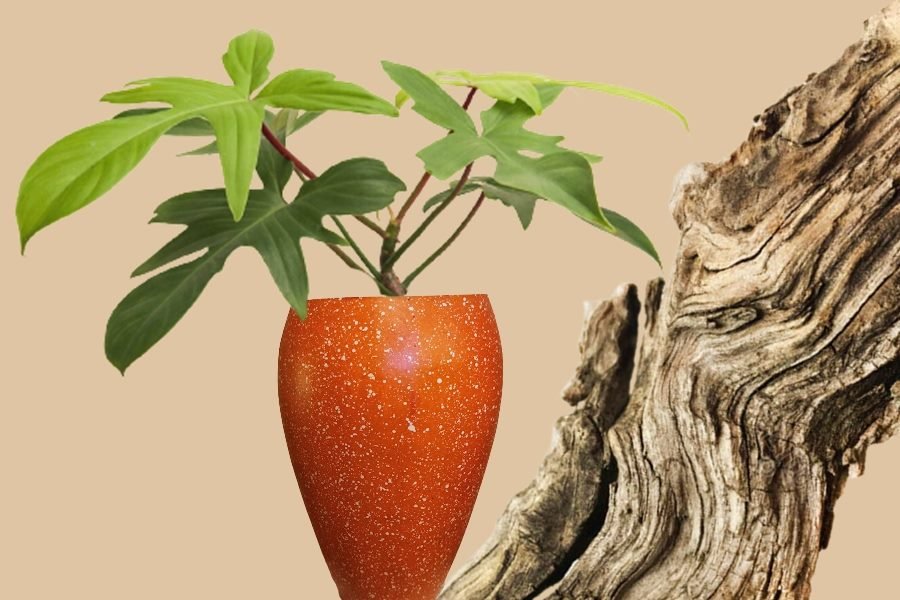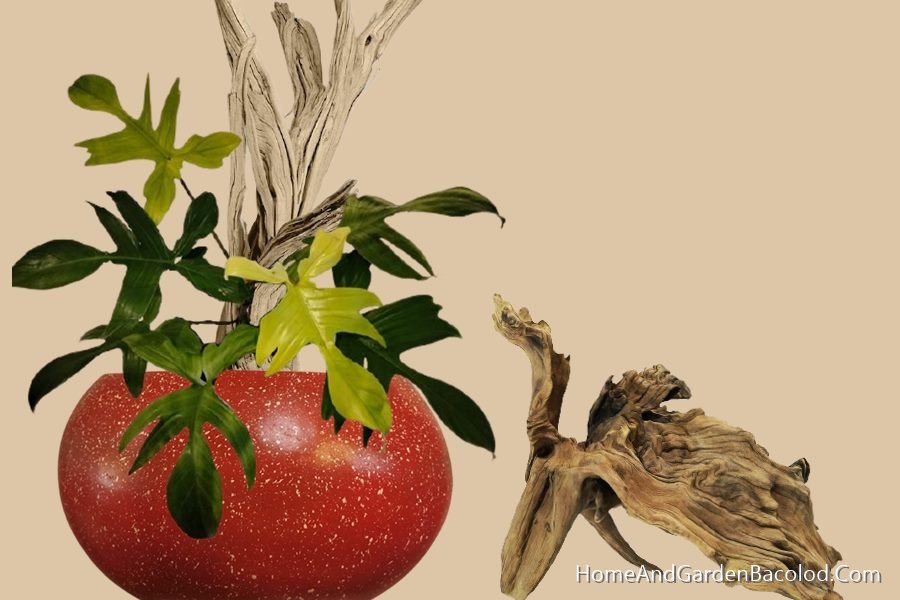
Plant Guide for Philodendron Florida Ghost
Philodendron Florida Ghost is from the family of Araceae; it requires a host like a pole or a tree as it is a climber type of plant. Florida Ghost is interesting because their leaves start creamy white, especially if the lightings are good, and gradually turn to yellow-green and dark green as they mature.
Philodendron Florida Ghost Care
Soil
Just like most Philodendrons, Florida Ghost requires a well-draining potting mix. A good potting mix must be high in organic matter. In the Philippines, an agricultural country, many organic materials can be used as they come in handy and are not so expensive. Our garden uses plenty of rice hulls, carbonized rice hulls, cow manure, coco peat, and used coffee grounds. We also use dried acacia leaves whenever they are available. When using coco peat, please don’t overdo it as this material retains so much water. But cocopeat is excellent to pair for rice hulls along with other materials. Please note that potting mix also depends on your area and climate, as the plant’s reaction varies depending on various factors.
For people living in the city, some materials are available in garden supply stores or in some gardens, especially peat moss. If a friend works in cafe shops, you can ask them to give you their used coffee grounds.
The Sphagnum moss is a suitable medium because it is well-draining and can provide aeration too.
Barks, moss, and charcoal are also a good mix for the Florida Ghost.

Fertilizer
There are many available foliar fertilizers available in the market. Since my garden is huge, I prefer spraying to save time and energy. Much liquid fertilizer, though, is more on nitrogen. I am using the 14-14-14 fertilizer with equal nitrogen, phosphate, and potassium. Many commercially available fertilizers have the 14-14-14 formula. Instructions come to most of these fertilizers.
Generally speaking, since I am using the spraying method, I made sure to spray very early in the morning or late in the afternoon. Many chemicals can burn the leaves if you use them when the sun is up already.
You might get confused about the information and tips from various authors on how they water their plants.
Depending on other environmental factors, watering may be excellent or harmful for the plants.
If you are growing Florida Ghost inside your home, you may water the plant once a week. Please note that the watering frequency also depends on your potting mix. As mentioned above, coco peat retains so much water; if this material is too much in your mix, this may cause root rot.
It would also be good that when you water your plant, you give enough water until the water drains down the hole of your pot. This watering also highlights some excess chemicals your plant doesn’t need anymore.

Water
Most plant parents, stick their fingers on the potting mix to determine if it is already dry. Then it’s the time that they would water their potted Florida Ghost.
Again, please take note that watering varies from place to place.
I grow most plants in the garden ( I live in the Philippines, a tropical country). So during summer, I water them daily. I don’t see any issue. I ensured that my potting mix was well-drained and the soil did not retain much water. My Florida ghosts are left out in the open during the rainy season.
Try to observe and experiment with your plants. Do not follow everything you read, as the writers’ point of view always depends on their experiences, and the climate of their location plays a significant factor in it.
Light
For most Philodendron plants like the Florida Ghost, filtered light is required. There are many nets available in the market that can filter the sun to avoid burns.
Direct morning sun is fine, but noon and late afternoon sun can harm the plant. If you are growing your plants inside your home, you can use the grow light available in the market today.
The creamy white color of the new leaf will indeed happen if the plant achieves the right light they need.
Temperature
Many gardeners said that the temperature range for the Philodendron Florida ghost is between 65F (18C) to 95F (35C).
If you live in Western countries, bring your Philodendrons inside during winter, as these plants are sensitive to cold weather.

Humidity
Most Philodendrons love humidity. If you live in a tropical country like me, I have several portable ponds scattered throughout my garden. You may also use a tray of sand with water to achieve this. The water evaporating from the tray will provide moisture for your plants.
Despite the commercial products’ convenience, I noticed that my plants, especially my Florida Ghost, respond well to animal manure. Just make use of the animal manure you use is already decomposed so your plants won’t be harmed.
Propagation
Florida Ghost is straightforward to propagate; others are doing the air layering.
I don’t see the need to make an effort for air laying. I just cut the steam ( 1 leaf and one node ) and immediately plant the material in the pot. Just ensure you keep the newly propagated Philodendron in a shaded area. I only expose them to the brighter spaces after a month or so.
Growth
Based on my experience, Florida Ghost or any other climbing Philodendron can grow big if placed in a very stable condition. Making them climb on your wall or up the tree would encourage the plant to grow big with more giant leaves. However, since Florida Ghost is a slow grower, many plant parents would opt to grow their plants on a container; just be ready with a good climbing pole when the plant starts to grow high.
Potting
Others said that repotting may be needed every after 2 to three years. For me, it depends. Some potting mix rots after a few months; when this happens, it is no longer healthy for your plant to stay longer on that mix. I do repot every year or when the need arises. If you see the roots poking out of the pot’s hole, it clearly shows that you need a bigger pot.
More Stories
- Travelers Palm | Plant Care | Guide
- Philodendron Black Cardinal Care | Plant Guide
- Philodendron Selloum [ Philodendron Bipinnatifidum ] Plant Guide
- Fiddle Leaf Fig Tree | Ficus Lyrata | Popular Varieties + Care
- Healthy Fruits in the PhilippinesBenefits of Dandelions
- Anti-Aging Foods | Fruits and Vegetables
- Oregano: A Powerful Herb in Your Kitchen | Health Benefits
- Rose and Its BenefitsBromeliad Care | Plant Guide
- Cercestis Mirabilis Care | Plant Guide
- Antioxidants to Heart Health Support
- Aloe Vera Benefits: Soothing Secret for Health and Wellness
- Dragon Fruit Health Benefits [ Pitaya/Pitahaya ]: The Exotic Superfood
- Grapes Health Benefits | Growing and Creative Ways to Serve
- Mushrooms Health Benefits | Supporting Local Farmers
- Lychee Health Benefits, Culinary Delights and Propagation
- Ginger Health Benefits : Unearthing the Healing Powers
- Onions Health Benefits : A Personal Journey of a Backyard Gardener
- Turmeric Health Benefits : Unveiling The Golden Wonders

